What is the difference between a hoverboard and a segway?
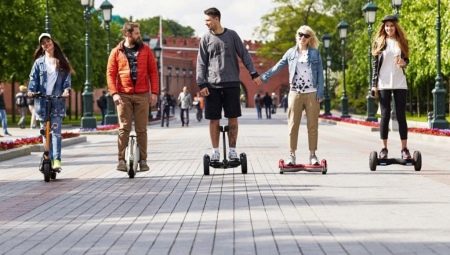
In the 90s, as soon as the first prototypes and prototypes of the Segway appeared, hardly anyone believed that gyro scooters would compete with them. Today, these devices on the market are fiercely fighting each other, but they have successfully solved the main task - providing personal electric transport.
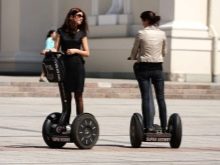
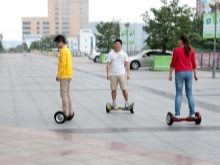

A bit of history
Segway was established in 2001. The developer of the device is Dean Kamen. Its essential advantage was the absence of the need to maintain balance while driving thanks to gyroscopes (horizontal sensors). After the appearance of the segway, the developers thought about how to reduce the cost and facilitate this type of transport, and this idea was embodied in a hoverboard. The first such device was registered as a new vehicle in the United States and was named Hoverboard, and its key inventor was the founder of Inventist, Shane Chen.
Since 2013, the demand for a hoverboard in China has grown sharply - it was ten times cheaper than a segway. In 2014, Chinese developers introduced the Smart S1 hoverboard model to the people. From that moment on, the hoverboard market began to develop rapidly - the Chinese company Chic, which is a license holder, allowed many other electrical companies to produce hoverboards under various trademarks.




The difference in appearance
The Segway is like a cart with two wheels and a handle. Thanks to a small platform on a segway, you can additionally transport any cargo, whether it be bags with purchases from a hypermarket placed on the platform and suspended from the steering wheel, or, for example, suitcases with tools. And although a hoverboard and a segway are types of dicycles, the difference between them is significant. The assembly weight of the Segway reaches 50 kg.In a hoverboard, it is no more than 15 kg. Cheap and lightweight models weigh 2.5 times less, which makes it easy to carry the hoverboard in a gym bag on your shoulder like a skateboard.
It will not be a problem to put it in the compartment for storing bags in a hypermarket or bring it to a school, university, office, hospital lobby while you are inside the building.
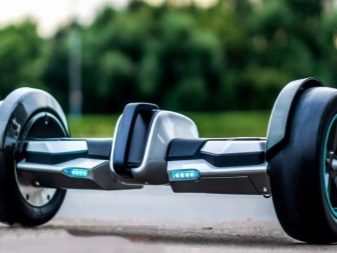

The large mass of the Segway allows it to use a more capacious (10-15 ampere-hour) battery. But this will not give a significant mileage on one charge compared to a gyro scooter: the difference is compensated for by the greater mass of the Segway and the ability to transport cargo, and this requires motors more than 3 times more powerful. You will get the same effect from a hoverboard with its 5-amp battery. The supply voltage for both is 24-84 volts, but they are charged from a 110/127/220 V power adapter.
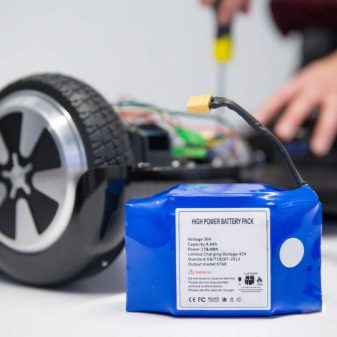
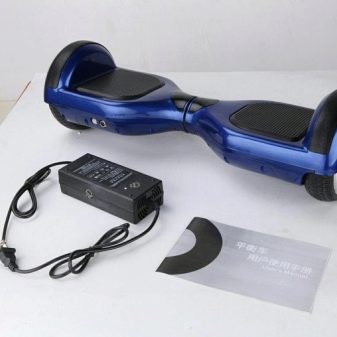
A kind of segway that replaced the large (classic) model - the mini-segway. Its merits are combined with a hoverboard of those models, which are supplied with a folding handlebar. The hoverboard has 2-3 times less legroom, so an attempt to hoist something else in this place will lead to loss of balance, frequent falls of the user and premature breakdown of the device. The diameter of the wheels of the hoverboard is close to that of a scooter. In a Segway, it is proportionate to a bicycle one.

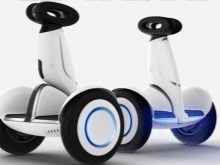
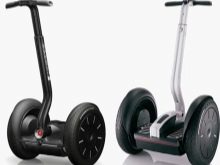
Differences in management
The Segway makes it easy to maintain balance thanks to the steering rack, which the driver simply holds on to while driving. The gyro scooter does not have a steering wheel - in order to turn in the desired direction, you need to lean a little into it... Despite the fact that the Segway does not have a third wheel (otherwise it would be a trike), it is not as necessary to keep balance on it as on an electric skateboard, a gyroscooter or an electric scooter.
Segway is controlled mainly by tilting the body without transferring the center of gravity from one leg to the other or from toes to heels, as is the case in a hoverboard. But it cannot turn on the spot, as a gyro scooter does, but due to the large inflatable wheels it will pass even on a country or gravel road.

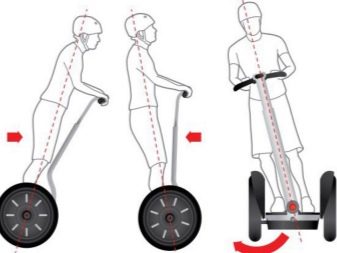
The hoverboard will not be lucky for the user if, for example, a child under 4 years old... Many models will not start when the rider weight is less than 30kg. This is partly to prevent experimentation with infants, toddlers and pets. For example, a trained dog or cat cannot ride a hoverboard. Segway has no such limitation.
The similarities in hoverboard and segway control are as follows:
- In maintaining the user's balance, gyroscopes are directly involved - sensors that track the strictly horizontal position of the device.
- To start moving forward, you need to deviate slightly from the vertical position.
- The operation of both devices is controlled by a software block built on the basis of a 32-bit processor. Its performance is comparable to a PC based on Intel Pentium 4 processors, the peak sales of which fell in 2002-2003. Segway and gyro scooter control does not require the performance of powerful gaming laptops equipped with 8-core processors. With the main task - clear and well-coordinated control, the single-core processor is also correct. This is one of the reasons why hoverboards are not that expensive - and continue to get cheaper.
- Both the segway and the hoverboard pass along the road with a slope of 15-25 degrees. Trying to climb a steeper incline will not end well - you will either overheat the engines or roll back if the incline is too steep. And on that, and on the other means of transport, you will not enter the ramp.
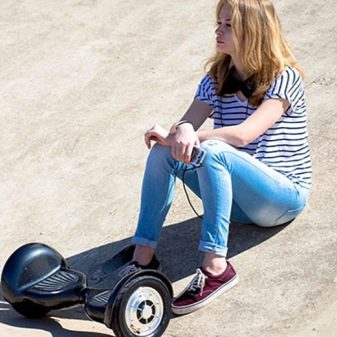

What is the best choice?
From the point of view of economy, it is better to choose a gyro scooter. Its cost starts at 7,000 rubles. The mileage from one full charge is from 10 km, this is enough for those who do not like to walk for a long time. This is a great gift for a child or teenager.
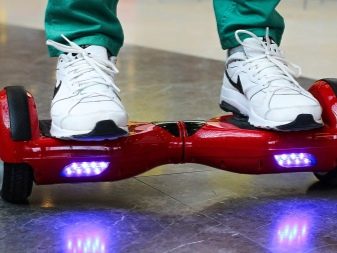

Despite the fact that the hoverboard is not designed to carry goods, many users go for the following trick. If, for example, you weigh 80 kg, and the gyro scooter is able to withstand 110, it is logical to use a backpack when going shopping, which, for example, cyclists and travelers wear. Having loaded the backpack up to 20-25 kg, it is permissible to come very close to the "safety margin" of the gyro scooter.
Carrying handbags while riding a hoverboard can easily lead to accidents: when the user is accidentally led to the left, and he needs to continue moving straight, he will turn in the wrong direction and fall under a car or knock a random passerby off his feet. Controlling the movement of a gyro scooter with a loaded backpack is somewhat more difficult - it will be more difficult to bend and control the slope, however, skill in this case comes quickly enough. Taking advantage of this advantage, it is logical to do without an expensive segway.


In terms of speed, the hoverboard is several kilometers per hour behind the segway. The typical speed of the former reaches today 15 km / h, which is comparable to teenage bicycles. The second has a speed of 20, which keeps him on par with road bikes for adults. Theoretically, according to traffic rules, the speed of segways and gyro scooters, scooters, electric skateboards and electric bicycles is limited to 30 km / h in order to reduce road accidents.
Some adult users are afraid that they will fall off the hoverboard when leaning sharply forward or backward, before it starts to move or slows down. Those whose fears have already been confirmed in practice with a lower-quality model, bought in pursuit of economy, are trying to equip the hoverboard with an additional design with a swivel third wheel, similar to that used on wheelchairs. The structure is welded to the standard steel base, and the device, in fact, turns into a wheelless trike.
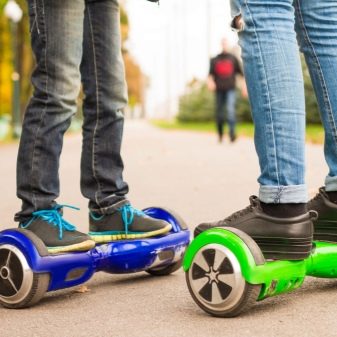

Sophisticated DIYers go even further and discard low-quality gyro sensors and electronic controls from Chinese models. They put additional lithium-ion batteries in the freed up space, leaving the original motors and installing a single driver board for them. The declared mileage is increased by at least 1.5 times. But the control requires a wired power button on a cord that the user holds in his hand while driving. As a result, such an alteration costs, on average, several times cheaper than buying a full-fledged segway.
Also, a gyro scooter can be converted into a mini-segway by making and attaching to the base an aluminum structure with a third (steering) wheel, like the one used in electric scooters. All these transformations are pushing experienced users to buy a gyro scooter, not a segway. Manufacturers are also not silent: sometimes a removable sliding steering base is included with the hoverboard.

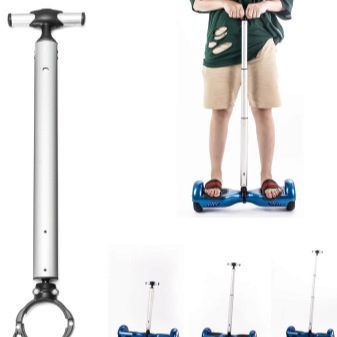
The larger the diameter of the wheels, the easier it is for the user to drive through bumps and cracks in the road. Cast wheels with a diameter of 6-9 inches are designed for asphalt or perfectly aligned tiles. Inflatable wheels of 10-14 inches will pass even on broken asphalt.
Be sure to choose a hoverboard model with flashing or side lighting to make you visible on the road at night. For all-weather rides, choose a hoverboard model equipped with waterproof rubberized and silicone inserts. Equip elbow pads, knee pads and a helmet to prevent serious injury. The presence of additional accessories and features such as Bluetooth communication and an MP3 player with a speaker is a matter of taste.
Segway would be chosen by people with overweight, congenital or acquired diseases of the cardiovascular system or musculoskeletal system, or elderly users. But the cost of this device, approaching the price of a supported foreign car, repels even this contingent.
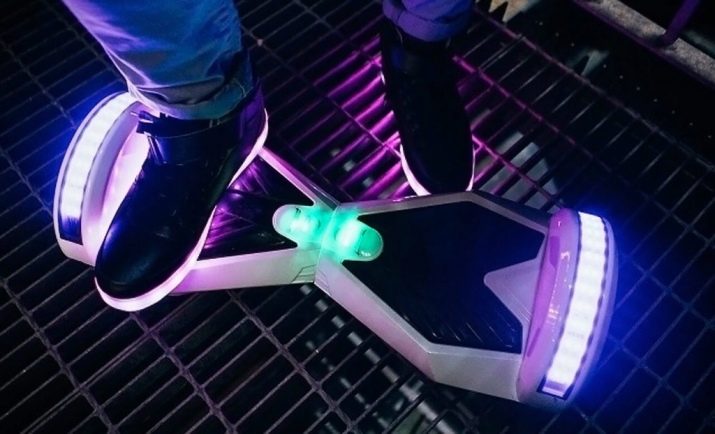
On a segway, it is difficult to turn around when driving in a traffic of people. The gyro scooter is different in this and is able to turn and unfold, almost without leaving the same place. The listed disadvantages of the Segway do not leave the vast majority of users with a practical choice.
For more information on the difference between a gyroscooter and a segway, see the video below.








